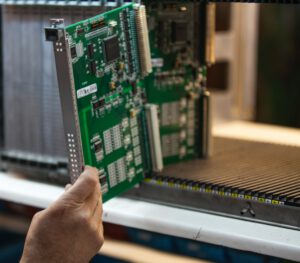There has been a lot of good news on the economic recovery horizon for 2021. With summer approaching, vaccines being deployed, and trillions of dollars infusing into the economy from the governments of other major countries, the economy is beginning to show signs of heating up again. It was reported that about a 20% increase in new money was injected into the worldwide currency system in the last year. A lot more will come in still, as the US may pass laws to add another 1.7 trillion dollars for COVID-19 support and $2.7 trillion more for infrastructure improvement in the next 10 years. Similarly, China will add more magnetic floating trains among its major city links, which will be an instrument to help inject multi-trillions into the economy again. All of these factors will lead to an economic surge.
THE PROS AND CONS OF AN ECONOMIC SURGE
With all of this great news, what should be watched out for on the manufacturing and supply chain side? Well, of course, both consumer spending and manufacturing order volume will heat up and increase in most sectors. Economies around the globe are expected to come out from the COVID-19 recession by the end of 2021. The cons? Both manufacturing capacity and material supply will have their usual supply shortage problems. As a result, costs of every aspects of supply chains will increase.
RAW MATERIAL PRICE-UP CHALLENGES
In the last few months we have already seen material prices go up as much as 25-40% on a number of materials such as copper, aluminum, steel, and plastic resins. Although a portion of these materials are seasonal, most of the cost increase is caused by supply-demand, and possibly by inflation. This trend may not go away in a short period of time.
SEMICONDUCTOR IC CHIPS CRISIS
For electronics products manufacturing, there are also some semiconductor IC chip supply end-of-line (EOL) problems. These chips are mostly old models using 0.25micron technologies in comparison to 0.05micron of the newest technologies. Aside from the manufacturing demand surge, the other root cause of this is that quite a number of semiconductor chip manufacturers have changed their fab lines from their old low profit IC chip products to more profitable artificial intelligent IC manufacturing. Electronics manufacturers using those chips from old lines are facing EOL problems. As an example, this has caused a number of well-known automobile manufacturers’ lines to go down all because of some 80 cent chips.
INVENTORY HEDGE STRATEGIES AND EARLY SUPPLY CHAIN PLANNING
What is the best thing to do in this type of situation? The answer may be pretty simple– build up inventories of materials to hedge the price increase and create value. This is a very typical cycle situation that has occurred throughout history. Depending on how long this new up-swing cycle lasts, proper inventory planning could be the best immediate action as a short term solution.
For the IC chip crisis, the best short term strategy is to get most of your chip inventory from the market place to avoid end-of-line problems. A longer term solution is to redesign products with more available chips. Some semiconductor chip manufacturers in China are taking over the manufacturing to keep the supply going. But, it will take several months or a year to see the results.
A PROMISING FORECAST
Overall, the economy looks quite promising for most countries coming out of the resilient COVID-19 pandemic. Demand is certainly on the up-swing. Material cost increase and capacity planning will be major battles in this new phase. On the front line of rapid specialty contract manufacturing, your E-BI teams will work with you to maneuver through new challenges, and get product manufacturing planed and delivered on time.





